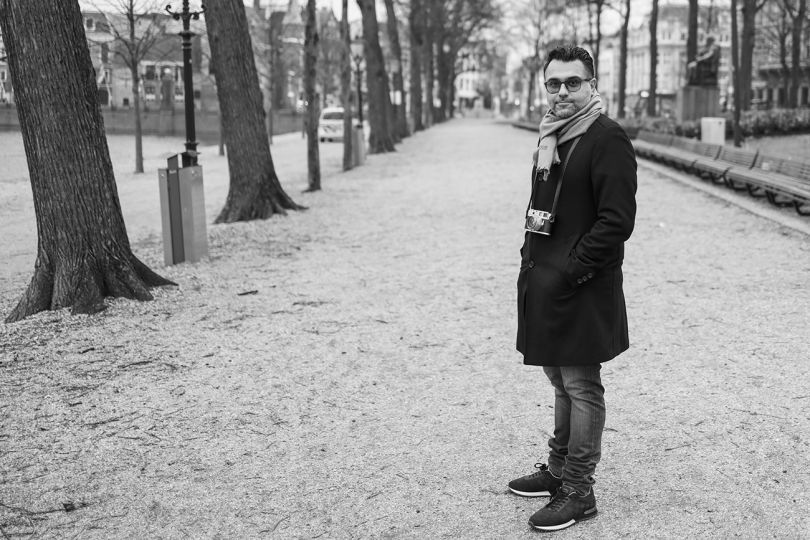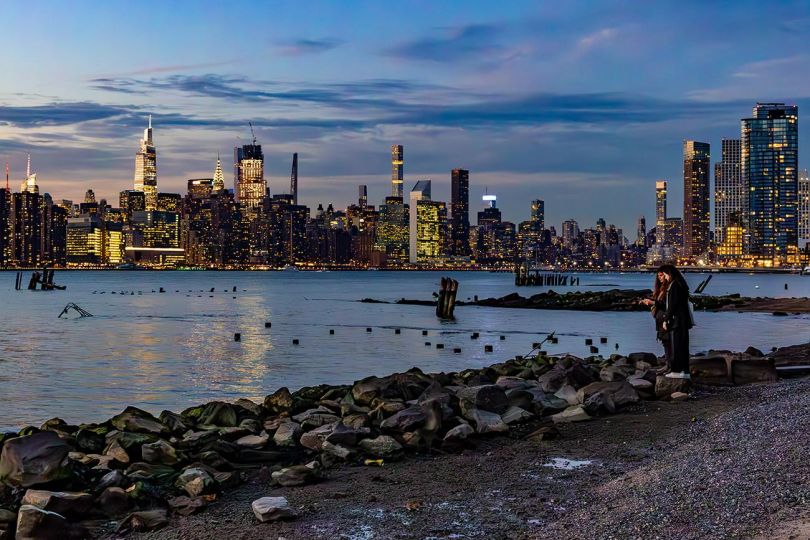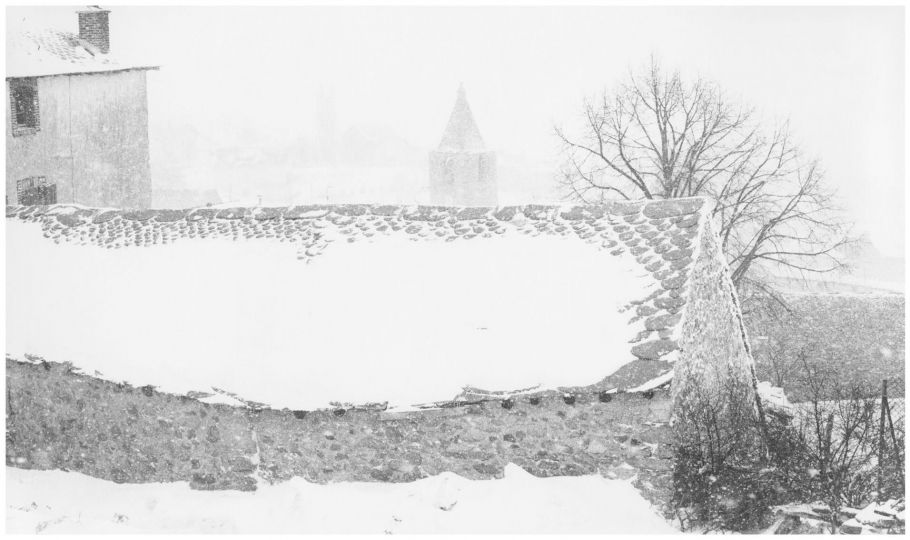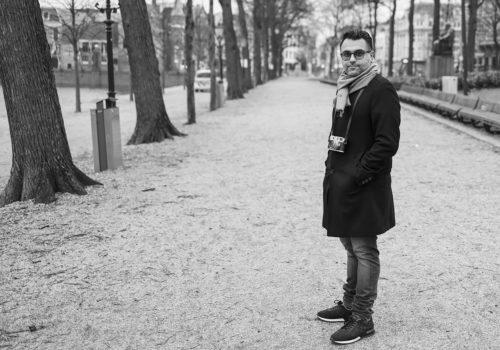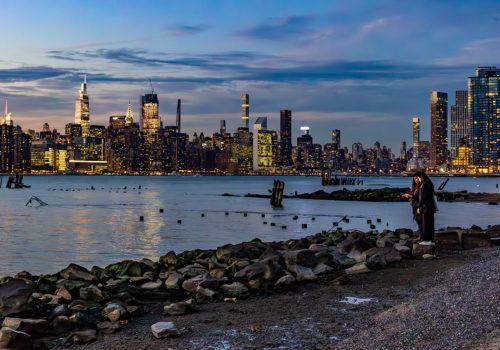An exhibition at the Musée des Beaux-Arts in Caen, featuring paintings, sculptures, installations, videos, and photographs, focuses on the theme “the wall”. At once an element that divides, key element of a prison, and the stuff of dreams, walls have inspired numerous photographers who have revealed all their cracks and protrusions.
It’s a powerful, sharp-edged straight line that stretches to the horizon. It’s a rectangle of shadow that falls across a paved street. The wall photographed in 1975 by Gisèle Freund is none other than the wall surrounding the prison of the Santé in Paris. This enormous, overwhelming, dark wall foreshadows the theme of the exhibition devoted to this strange architectural element.
A site where everything seems possible, the wall is first of all a separation. Separation between two territories, between inside and outside, between one world and another. Real or imaginary, it is a barrier to movement, a physical—or mental—element that blocks real or imagined displacement.
Gordon Matta-Clark shows this brilliantly in his performance Splitting. In 1974 the artist cut through the wall of a house slated for demolition in order to let in a ray of light at a certain angle. Matta-Clark thus challenged our representation of space firmly rooted in the stereotype of a house with perfectly straight walls.
His work is architectural, and at the same time political and social. It bends the norms and reinvents the laws in the concrete expectation that they are engendered as a habitat.
“Chicken coops”
The separation created by the wall is also foregrounded by Jean-Luc Moulène and his photograph of a house at night, lit up from the inside, which lends a surreal feel to the whole. Moulène invites us to contemplate this classic household which at the same time appears to be fake, like a life-size doll house. In addition to the walls of the house, there seems to be another wall, an invisible one, between the viewer and the house. It’s as if the image were stirring our desire to cut across what’s left of the garden and cross the threshold of this excessively lit house to find ourselves in a make-believe world, filled with illusions and uninhabitable.
Perhaps this is the promise held for us by the act of hurtling our existence against walls. One thing is certain: walls can hold you in. This is the very meaning of the work of Jacqueline Salmon who photographed the walls of the Clairvaux prison. The artist managed to get inside the former prison cells, nicknamed “chicken coops,” and to immortalize them in magnificent portraits of places.
The peeling paint, the traces left behind by the inmates, the dreary light oozing from the ceiling—every element resounds with the voices of the prisoners. Nearby, the museum exhibits the photographer’s more recent series. It also shows the Clairvaux prison, but this time the courtyard in which prisoners pace in circles. Here the walls are giant surfaces of reinforced concrete which make captivity palpable.
What dreams are made of
Another site of imprisonment registered by the eye of a photographer is the room in which the American poet Ezra Pound died. Accused of treason for his support to Mussolini during the war, the poet was confined in a psychiatric ward before ending his days in an attic. The room, located in Venice, was photographed by Dieter Appelt in 1981. It is similar to Vincent Van Gogh’s bedroom: a single chair, a bed, and a dilapidated wall.
The wound that may open up in a wall is at the heart of Sean Scully’s work in a series done in a Mexican village. The artist captured façades worn away by time. The paint is peeling, letting strange shapes come to the surface. Walls thus become the stuff of dreams, a screen for our imagination. Brassaï foregrounded this aspect of walls when, in the 1970s and earlier, he photographed the scars and incisions made by unknown hands around Paris. In the 1940s, Brassaï was working on his series Graffiti which accumulates anonymous drawings carved into the stone. Here we have the head of a clown, there a bird, and there a death’s head. The wall thus becomes a site of wonder and reverie, eternally malleable matter like a blackboard covered by the imaginative strokes of a piece of chalk. “I’m fascinated by walls because in our civilization they have replaced nature,” Brassaï used to say.
Jean-Baptiste Gauvin
Jean-Baptiste Gauvin is a Paris-based journalist, writer, and stage director.
Murs
May 5 to September 18, 2018
Musée des Beaux-Arts de Caen
Le Château
14000 Caen
France
http://mba.caen.fr/


